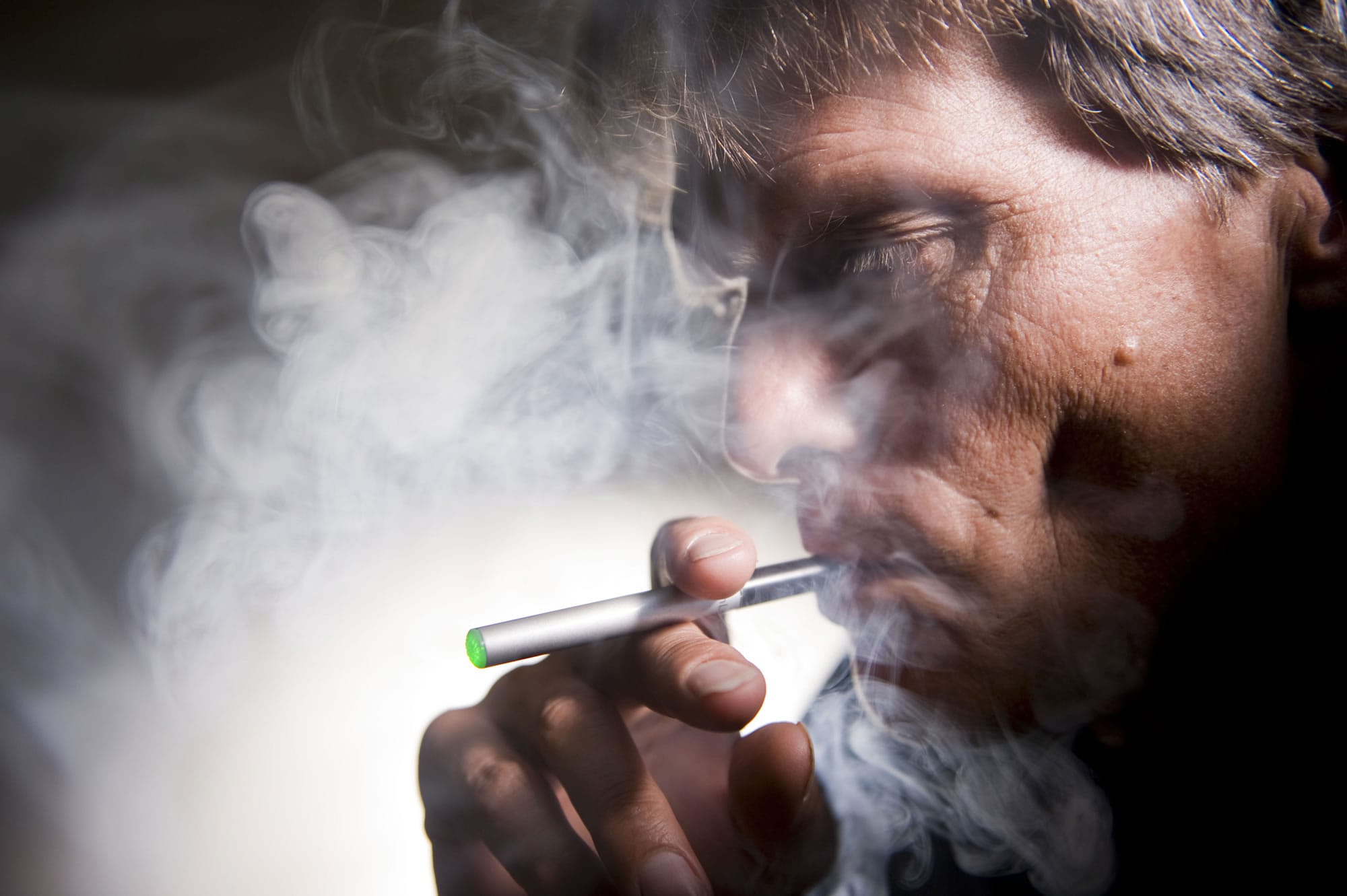Nonprofit Consumer Advocacy for Smoke-free Alternatives Association: <a href="http://www.casaa.org">http://www.casaa.org</a>
U.S.Food and Drug Administration information on electronic cigarettes: <a href="http://www.fda.gov/newsevents/publichealthfocus/ucm172906">http://www.fda.gov/newsevents/publichealthfocus/ucm172906</a>
Tobacco-cessation help in Washington: <a href="http://www.quitline.com">http://www.quitline.com</a> or call 800-QUIT-NOW
They’re not just cigarettes, they’re electronic cigarettes, and they’re gaining popularity.
But is “vaping” any less harmful than smoking? That depends on who you ask.
Public health officials argue the long-term effects of the unregulated products are unknown and require more research.
“It’s probably a lesser amount of the toxic substances, but the research just isn’t there to support it, and we would never say it’s a safe product,” said Theresa Cross, health educator for Clark County’s chronic disease prevention program.
Electronic cigarette advocates counter that the product’s vapor is far less hazardous to one’s health than tobacco cigarette smoke and a safer alternative to traditional cigarettes.
“I would still be smoking if the (U.S. Food and Drug Administration) and all these so-called public health groups had succeeded in banning electronic cigarettes,” said Gregory Conley, volunteer legislative director for the nonprofit Consumer Advocates for Smoke-free Alternatives Association and an e-cigarette user.
Electronic cigarettes — also called e-cigarettes or personal vaporizers — are battery-operated devices. Some look like traditional cigarettes or cigars; others look like pens or other devices. An electrical coil inside the device warms a replaceable cartridge that is soaked with nicotine. The coil vaporizes the nicotine, which is then inhaled by the user. Flavors such as chocolate, vanilla, strawberry, cherry, mint and tobacco can be added to the cartridge.
Electronic cigarettes have been gaining popularity since emerging on the marketplace several years ago.
A 2011 study by the Centers for Disease Control and Prevention found about 21 percent of adult smokers had used electronic cigarettes. That’s up from about 10 percent of smokers in 2010, according to the CDC.
In both 2010 and 2011, e-cigarette use was significantly higher among current smokers compared to former and nonsmokers. Overall, about 6 percent of adults have tried e-cigarettes, according to CDC research.
Unregulated product
Unlike tobacco products, most electronic cigarettes are not regulated by the FDA. Only e-cigarettes marketed for therapeutic purposes are regulated by the FDA. The federal agency announced it intends to begin regulating other nicotine-containing products, such as e-cigarettes, but those regulations have not yet been announced.
Because e-cigarettes are unregulated, the FDA argues it has no way of knowing — except for limited testing conducted in 2009 — the levels of nicotine or the amounts or kinds of other chemicals contained in the cigarettes’ cartridges.
During a limited study in 2009, the FDA found detectable levels of carcinogens and toxic chemicals, such as diethylene glycol (an ingredient used in antifreeze), in e-cigarette cartridges. That year, the FDA issued news releases about the findings and expressed concerns about the safety of the products.
Conley said the FDA’s “false and misleading press releases” have fueled misconceptions about e-cigarettes.
The FDA study sampled less than 20 cartridges and found only trace amounts of carcinogens — far less than the amounts in tobacco cigarettes and levels equivalent to FDA-approved nicotine patches and gum, Conley said. In addition, the diethylene glycol detected was far below toxic levels and was likely there as a result of a manufacturing error, he said.
Additional studies of the contents of e-cigarettes have found only a handful of ingredients, Conley said. The main ingredient in electronic cigarettes is either propylene glycol (deemed a “generally recognized as safe” product by the FDA) or vegetable glycerin (a food additive). They also contain nicotine and food flavoring, Conley said.
“While anything containing nicotine cannot be called 100 percent safe, evidence from numerous studies strongly suggests that they are magnitudes safer than tobacco cigarettes,” according to the CASAA website.
The CDC does acknowledge that e-cigarettes “appear to have far fewer of the toxins found in smoke compared to traditional cigarettes.” However, the agency stipulates, the long-term health effects must be studied.
Marissa Harshman: 360-735-4546; http://twitter.com/col_health; http://facebook.com/reporterharshman; marissa.harshman@columbian.com




